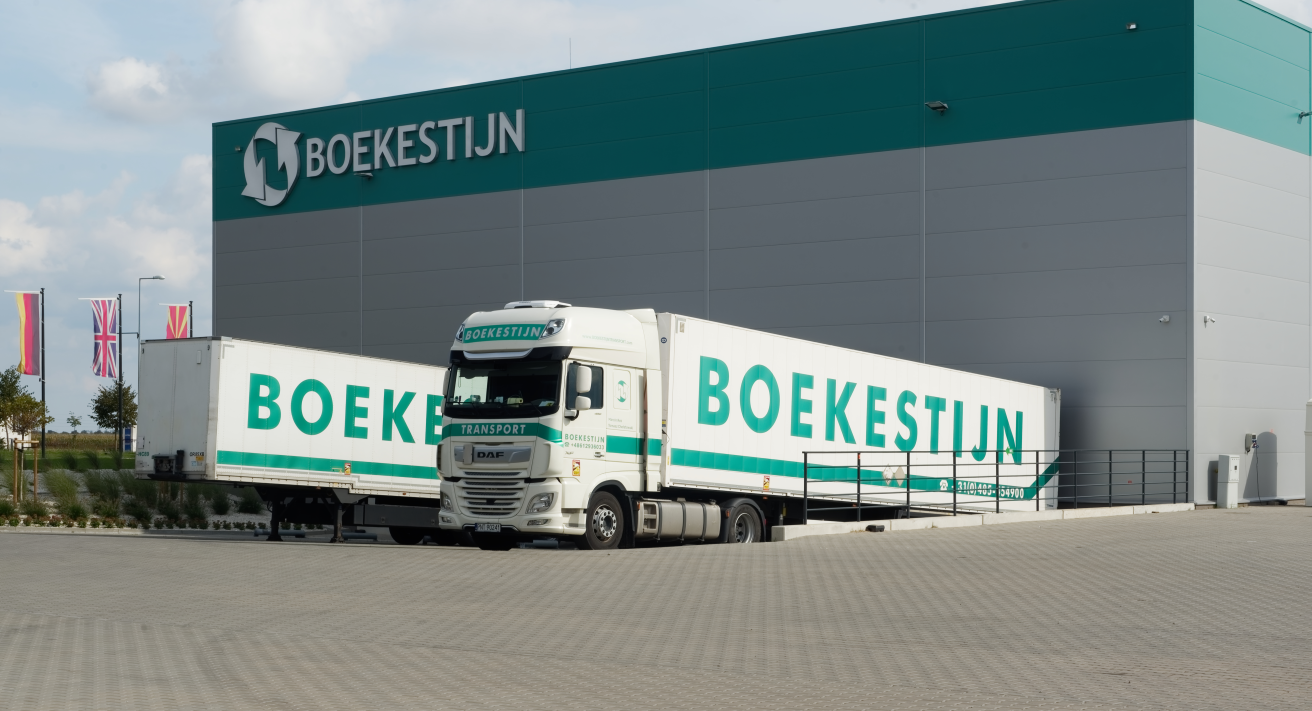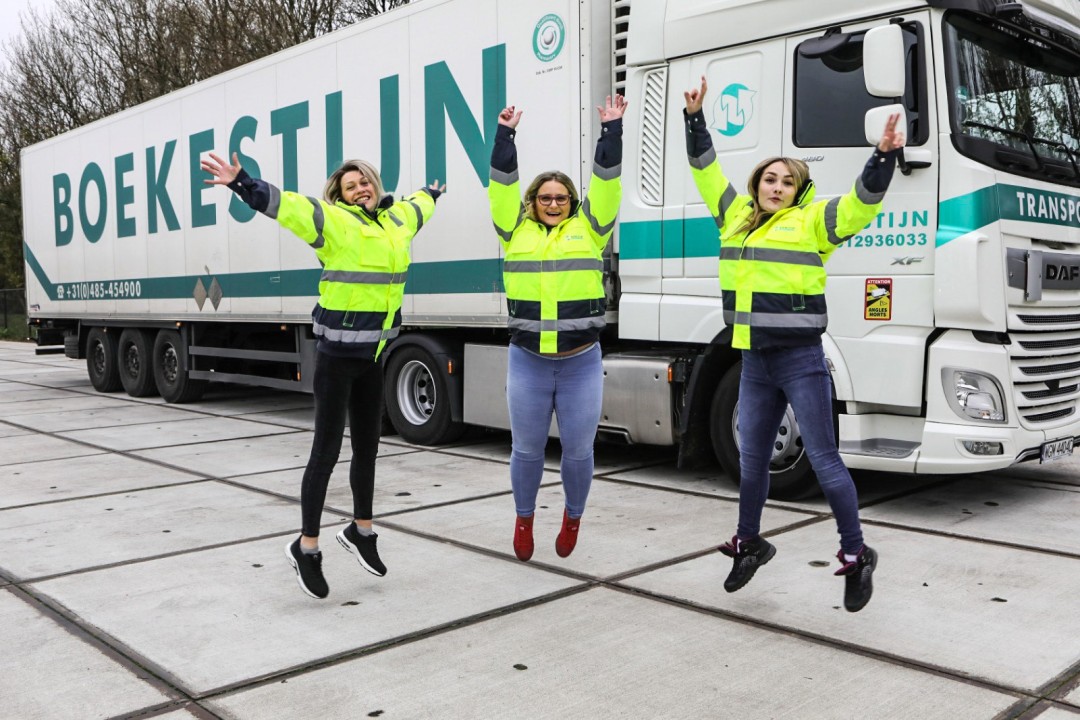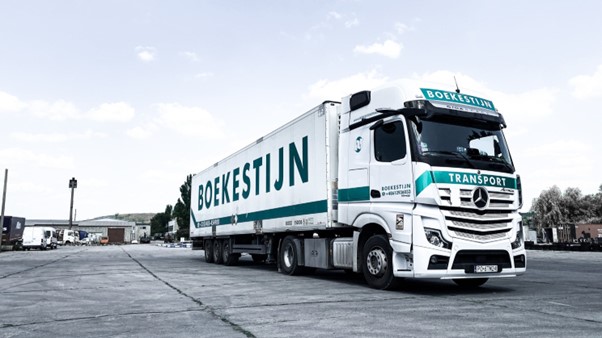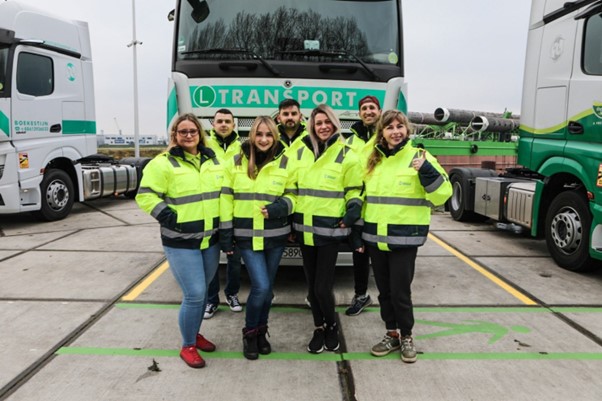
Susie Jones
Транспортний кейс Boekestijn
Створено: 08.08.2024
•
Оновлено: 15.08.2024
Boekestijn Transport - це сімейний бізнес, що пропонує комплексні логістичні послуги. За останні 29 років компанія значно зросла і пишається своїми високими стандартами та конкурентоспроможними цінами. Керівник команди, Лукаш, розповідає нам про компанію та її досвід роботи з SNAP.
"Компанія Boekestijn існує з 1994 року і на сьогоднішній день налічує 1000 вантажівок по всій Європі", - розповідає Лукаш. Нема нічого дивного, коли дізнаєшся, що на початку своєї діяльності компанія починала з одного водія, вантажівки та спальні, яка слугувала офісом.

Сьогодні Boekestijn Transport спеціалізується на перевезенні модного одягу, фармацевтичних препаратів, причепів тощо. "У нас є відділення в Польщі, Нідерландах, Німеччині, Молдові та Великобританії", - пояснює Лукаш. Їхнє зростання та прихильність до логістичної галузі не залишилися непоміченими. У лютому 2021 року компанія отримала Почесну медаль від Транспортно-логістичної асоціації Польщі за внесок у розвиток польського транспортного ринку.
Безпека водія та вантажу з SNAP
Безпека водія та вантажу є обов'язковою для таких автопарків, як Boekestijn Transpot. Компанія впровадила заходи для забезпечення безпеки та збереження вантажу. Вони включають цілодобовий моніторинг вантажу та багатопілотовані вантажівки. Компанія стала першою голландською компанією і третьою в Європі, яка отримала схвалення TAPA. Вимоги безпеки вантажоперевезень TAPA діють з метою "захисту продукції, що перевозиться автомобільним транспортом, та забезпечення безпеки водіїв, транспортних засобів і вантажів шляхом запобігання злочинним посяганням".
Безпека та захист були важливими факторами для Boekestijn Transport при прийнятті рішення про SNAP. Лукаш пояснює: "Це було для того, щоб забезпечити безпечний потік паркування для моїх водіїв, а також для вантажу. З SNAP ми можемо бути впевнені, що там, де ми паркуємося, все буде безпечно".

Наразі мережа SNAP налічує понад 150 000 водіїв, тому ми приділяємо особливу увагу безпеці та захисту наших партнерів. Крім того, наша команда SNAP Access & Security працює з кількома нашими партнерами для надання індивідуальних рішень, щоб захистити водіїв від загроз злочинів, пов'язаних з вантажами. Команда проводить аудит локацій і рекомендує найкращі засоби для захисту об'єктів.
Переваги SNAP для автопарків
Для таких операторів, як Лукаш, SNAP робить управління автопарком простим і безтурботним. Ми спрощуємо процес завдяки підключеним послугам та нашій мережі вантажних автомобілів. "Я почув про SNAP від своїх колег і без вагань вирішив підключити наш автопарк. Налаштування було простим процесом для всіх нас", - говорить Лукаш. Він стверджує, що SNAP дозволив йому та його команді "планувати наші маршрути таким чином, щоб наші вантажівки покривали більший пробіг, завдяки функції резервування місць для паркування. Ми можемо бути впевнені, що вони будуть припарковані в безпечному місці".
SNAP - це не лише вигода для операторів автопарку компанії, але й для водіїв. SNAP полегшує життя водіїв, з'єднуючи їх з нашою мережею автотранспортних послуг, коли і де вони цього потребують. Boekestijn Transport має 1000 вантажівок, які подорожують Європою, тому безперебійне та спрощене рішення є життєво важливим. Лукаш каже, що "функція бронювання в SNAP є найбільш корисною для автопарку".

Що найкраще для Лукаша та команди у приєднанні до SNAP?
"З точки зору водія, вони уникають додаткових витрат. Все це робиться через SNAP", - стверджує Лукаш.
Приєднавшись до облікового запису SNAP, компанія Boekestijn Transport отримала рішення для оплати послуг автопарку - без готівки чи картки. Незалежно від того, чи це паркування вантажівок, чи мийка вантажівок, чи оплата за проїзд через Дартфордський перехрестя, все це здійснюється через SNAP.
Підпишіть свій автопарк на SNAP вже сьогодні
Наше рішення для оплати послуг автопарку використовується кожні 15 секунд по всьому континенту для оплати послуг вантажних автомобілів. [Приєднуйтесь] (https://snapacc.com/fleet-operators/) понад 6 500 автопарків використовують SNAP Account як комплексне рішення для оплати послуг автопарку.



